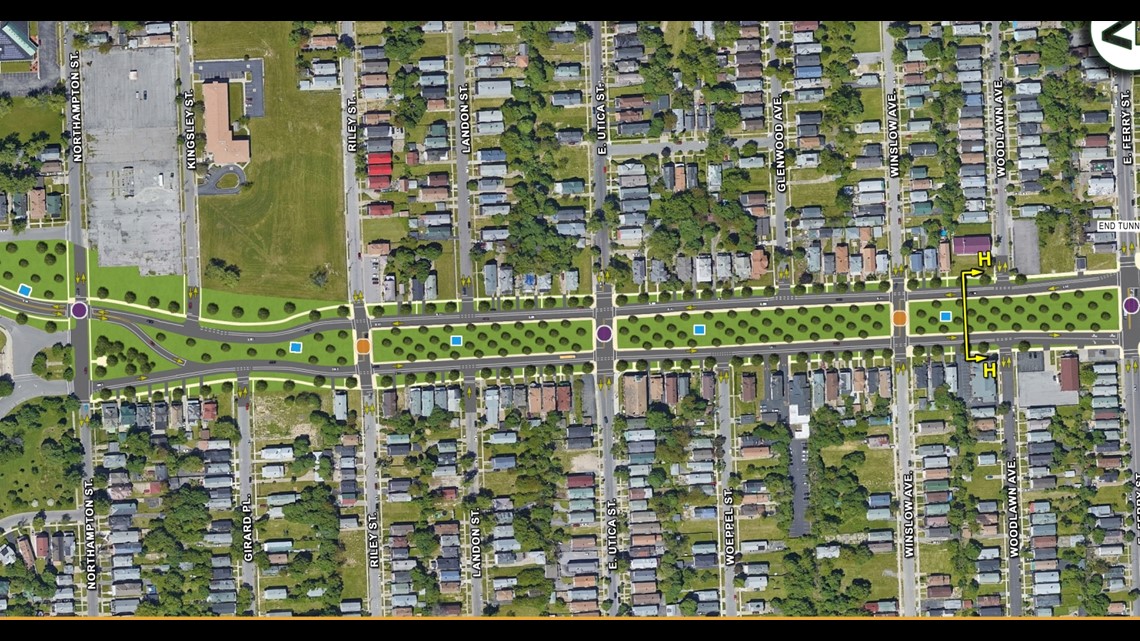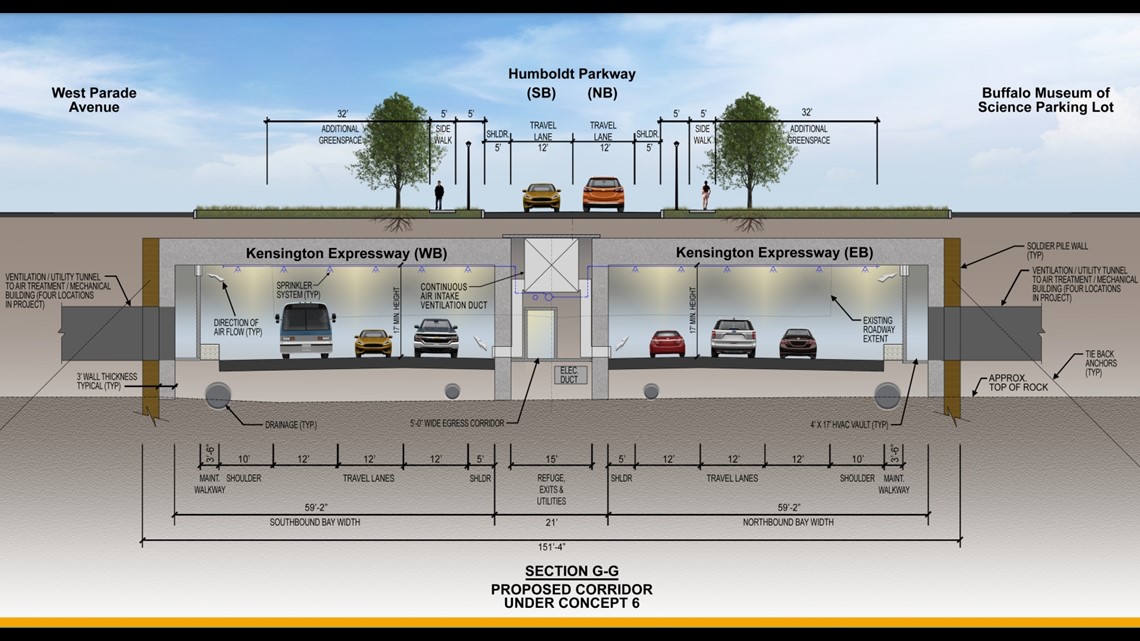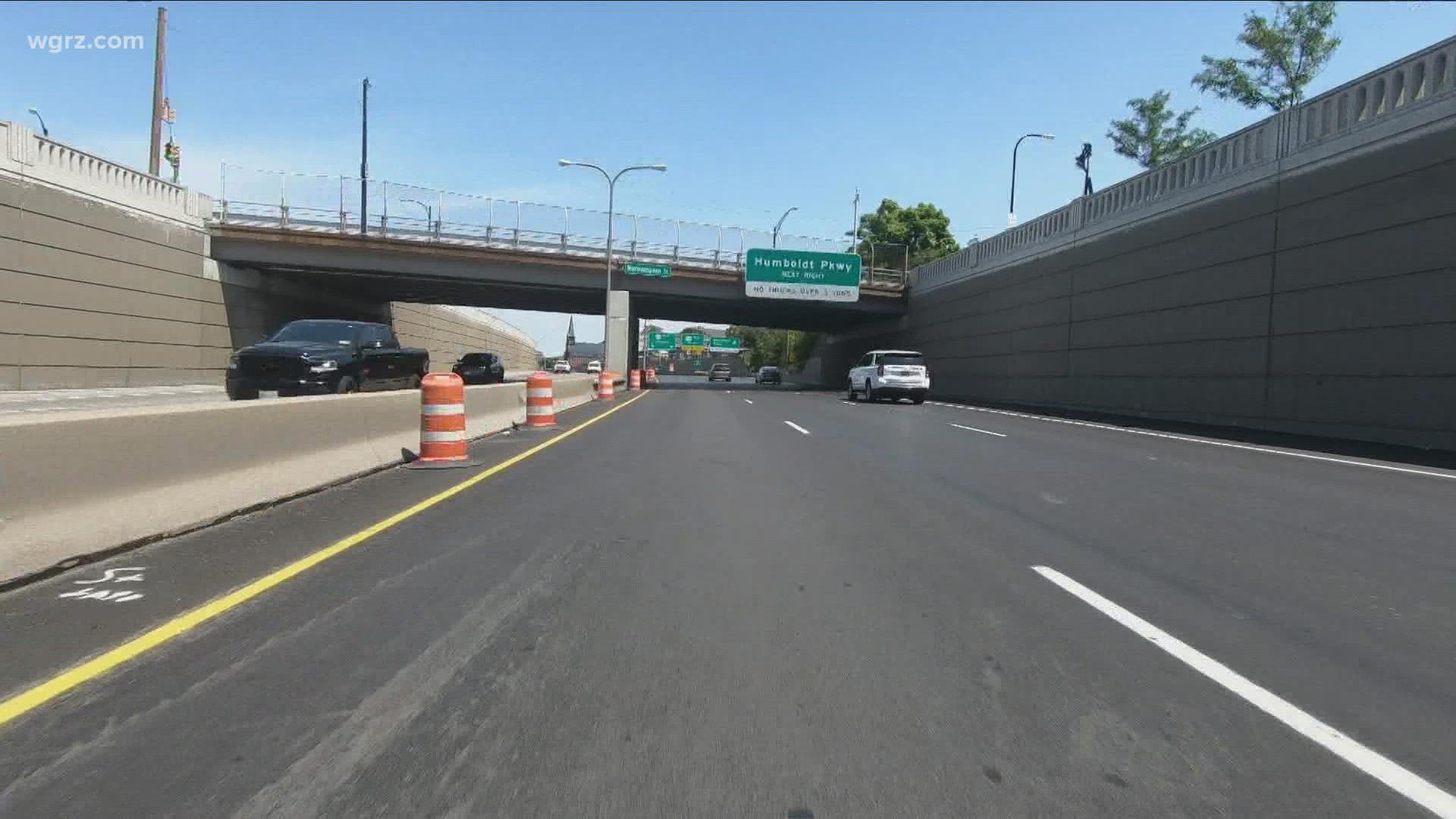BUFFALO, N.Y. — Thursday was the first day of a 30-day public comment session on potential plans for the Kensington expressway.
The New York State Department of Transportation hosted two public scoping sessions at the Buffalo Museum of Science, where officials were on hand to answer questions and interested members of the public could view various options under consideration and comment on them.
Comments can also be submitted via a special website dedicated to the project, where the options are also on display.
What is being considered?
There are 10 concepts under consideration, regarding three-fourths of a mile, a recessed stretch of the Kensington between Best and East Ferry streets.
They range from doing nothing and leaving things the way they are, to filling in the recessed portion of the Kensington and making it an at-grade Boulevard, to the costliest and most expensive option of covering the recessed portion, which would then become a tunnel with grass and trees on top of it, to make it look like the once-pictorial Humboldt Parkway, which was destroyed by the expressway's construction in the 1960s.


The estimated price tag for the last option would be $725 million, according to Nicholas Choubah, who is the state DOT's chief engineer, who added that such a project would take up to four years to complete if construction were to start in late 2024.


"We're going to respond to substantive comments as we receive them and really look at how we actually pull this project together given the response we get from the community," said NYS DOT commissioner Marie Therese Dominiguez, who came to Buffalo on Wednesday.
What are people saying?
There were no shortage of attendees at the first scoping session held Wednesday morning, and to which many arrived early.
"I love this tunnel idea," Terry Anderson said. "This is what should have been done long time ago, when I was 7 years old, because I used to play on Humboldt Parkway."
Dwayne Jones, the pastor of a neighborhood church and developer of the city, expressed concerns over the environmental impact of exhaust being expelled from a tunnel.
"They have not given us any percentage of pollution extracted from underneath coming up. I think we need to get more accurate information on that," Jones said.
According to the DOT, any tunnel option would require an extensive exhaust and filtration system, designed to change the air out in the tunnel every two minutes, particulates would be filtered through stations, perhaps designed to look like houses, before being released into the nearby neighborhood.
Meanwhile, Daniel Sack thinks the DOT is missing the boat entirely entirely.
"What we really should do is what's best for the planet, which is to get people out of cars," Sack told WGRZ TV. "What we should concentrate on, with the money we spend on transportation, is public transportation and getting people on trains and on buses."
Another option under consideration: get rid of that section of Kensington entirely, and restore the fabled Olmsted designed Humboldt Parkway to its former grandeur.
However, that option is, according to sources, the least desirable to the DOT because all the cars that currently use the Kensington would have to go somewhere, possibly resulting in a bumper-to-bumper clogging of the restored parkway, similar to the situation which existed in the post-war era of the late 1940s and early 1950s, and which is just one of the reasons the Kensington was built in the first place.

